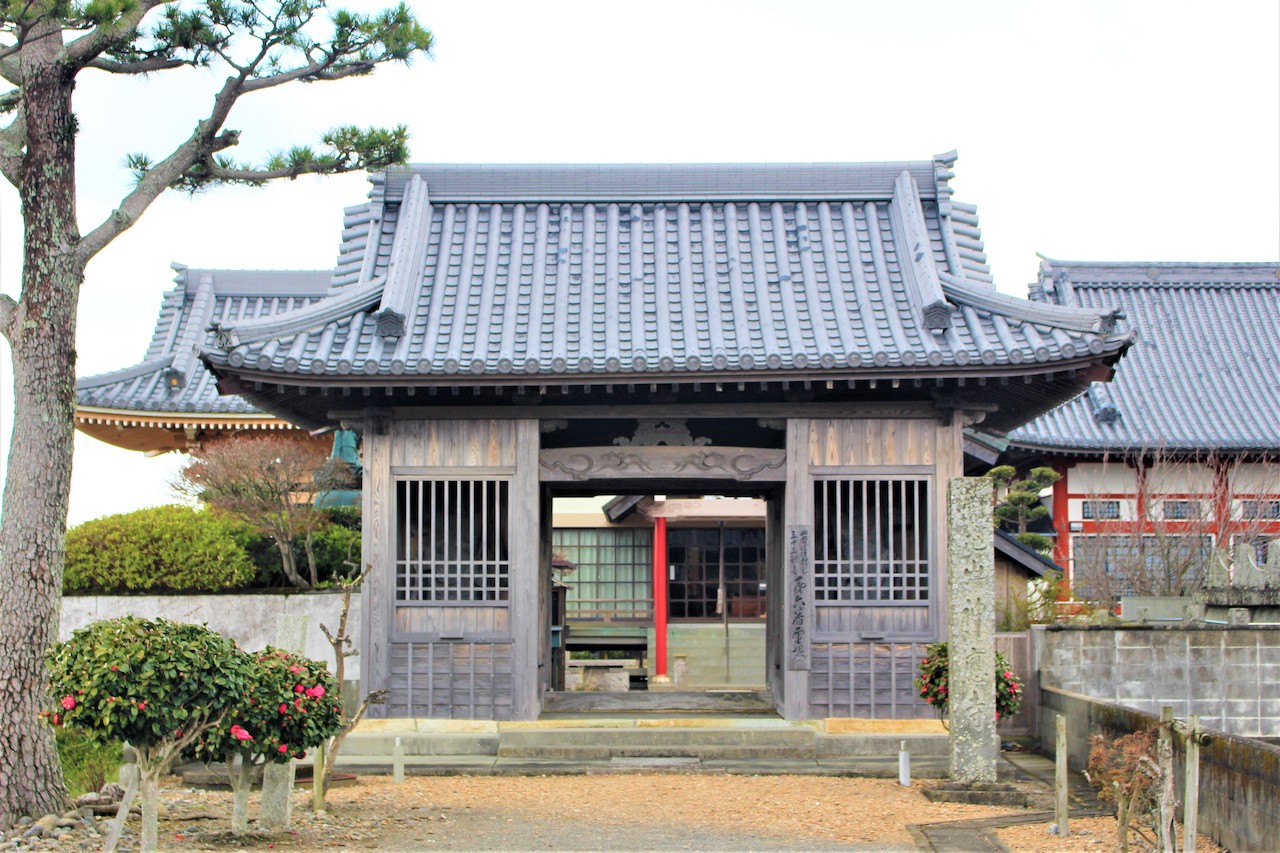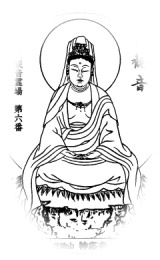
Sect: Koyasan Shingon Buddhism
Principal Deity: Daisho Fudo Myoo (Acala, the Great Sage)
Founded: Unknown
Goeika (Pilgrimage Hymn): “How grateful we are for Daikokuten’s blessings, At Jinnoji, in the village of Imazu, A place of deep reverence and wonder.”
Manifestation (Okeishin): Byakue Kannon (White-Robed Kannon)

Byakue Kannon is depicted seated upon a rock, not wearing the dyed robes of purple or red often seen on monks, but instead dressed in pure white. This signifies Kannon’s closeness to us, bestowing merit and blessings at our very side.
○ History & Origins
During the Toyotomi period (around 1580), a monk named Yuhan, who served the feudal lord Hachisuka of the Awa domain, entered Jinnoji and revived it after a period of decline.
During the Edo period, the temple was one of the Awa Hachimonshu—the eight most influential Shingon Buddhist temples in Awa Province that had numerous branch temples. Until the end of World War II, Jinnoji held vast temple lands and maintained a grand presence.
The principal deity of the temple is Daisho Fudo Myoo, and the temple’s hidden main deity is a Yakushi Nyorai (Medicine Buddha) from the Kamakura period. Additionally, the temple enshrines a 3-meter-tall statue of Daikokuten. Unlike the traditional image of Daikokuten standing on rice bales, this statue represents a freely moving and immensely powerful form of Daikokuten, revered since ancient times for its miraculous ability to aid sentient beings.
As its name suggests, Jinnoji originally served as the bettoji (temple overseeing a shrine) for a Hachiman Shrine, further emphasizing its deep historical significance. Even today, the sacred object of worship from that shrine remains enshrined within the temple’s Daikoku Hall. Jinnoji is a rare example of a temple preserving the ancient tradition of syncretism between Buddhism and Shintoism.
○ Message from the head priest
Since its founding, Jinnoji has been one of the Five Great Southern Temples of Awa and was known as a Ritsu-in (a temple dedicated to Buddhist precepts) and a center of learning. The nearby Imazu Elementary School traces its origins back to this temple.
The temple’s enshrined Daikokuten is known as the Hashiri Daikokuten (“Running Daikokuten”), and has been deeply revered for centuries.
○ Access
〒 779-1122
Address: 49-2 Hachiman, Nakagawa, Anan, Tokushima, 779-1122, Japan
Phone number: 0884-42-0908
Large Buses: Permitted
Microbuses: Permitted